
LAND Rover’s fifth-generation Discovery is longer, wider, sleeker and the most advanced example of the breed in its 27-year history – plus it brings a new aluminium-intensive body, meaning it’s almost half a tonne lighter than the car it replaces.
Sporting a sleeker skin in line with what previewed on the smaller Discovery Sport, the new Discovery – which drops the number, to be known (again) simply as Discovery – ditches its ladder frame chassis for the Range Rover Sport’s monocoque design.
The aluminium architecture and predominantly aluminium body – the doors are steel and the tailgate is a plastic composite – have reduced weight by 480kg (as low as 2174kg), paving the way for Land Rover’s in-house-designed Ingenium four-cylinder engine family, which will complement the existing family of V6 diesels.
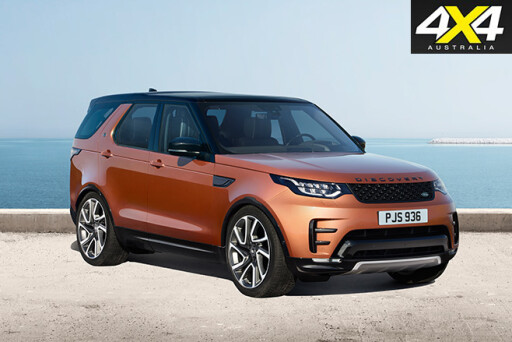 While the curvier body eschews some of the visual muscle of the squarer Discovery 4, the new Discovery is 141mm longer, at 4970mm. At 2073mm wide it is also 20mm wider.
While the curvier body eschews some of the visual muscle of the squarer Discovery 4, the new Discovery is 141mm longer, at 4970mm. At 2073mm wide it is also 20mm wider.
However, the 1846mm height of the new Discovery means it is 41mm lower than the Discovery 4.
Sharing the Range Rover Sport’s 2923mm wheelbase, the new Discovery is claimed to have more interior space – while still catering for up to seven adults in its three rows of seats.
Land Rover smoothed the exterior look of the car to make it less polarising and help it better compete in the fast growing seven-seat SUV segment; the idea is to have it appeal to more buyers, in turn stealing sales from more luxury-focused models such as the BMW X5, Mercedes-Benz GLE and Audi Q7.
 The much-loved split tailgate of the Discovery has been dropped in favour of a more conventional single set-up that maintains the Disco’s trademark offset number plate.
The much-loved split tailgate of the Discovery has been dropped in favour of a more conventional single set-up that maintains the Disco’s trademark offset number plate.
However, designers have created what they describe as a best-of-both-world solution, which involves an electronically folding panel that flips down to mimic the lower tailgate; it can hold up to 300kg, making it a seat, table or change table for kids.
On more expensive models those new seats can be individually flipped and folded in 14 seconds via a smartphone app, the first of many high tech additions boasted by what is shaping up to be Land Rover’s most advanced vehicle.
Referred to as the “digital Discovery” by Land Rover engineers at its reveal ahead of the Paris Motor Show, the new off-roader features a growing suite of 35 apps that can be controlled through the InControl system that works in conjunction with the voice control system and 10.0-inch colour touchscreen.
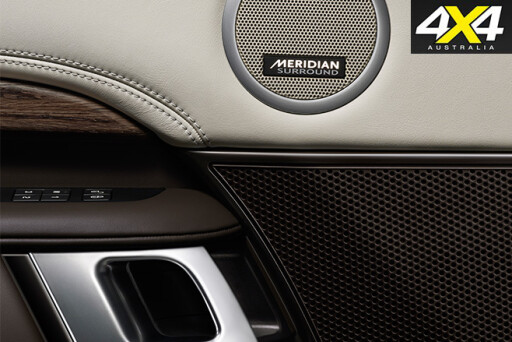 The remote connection app also allows the car to be heated or cooled and locked or unlocked from anywhere in the world, once the car and phone are connected.
The remote connection app also allows the car to be heated or cooled and locked or unlocked from anywhere in the world, once the car and phone are connected.
Keeping the whole family content and connected was also a big focus of the new Disco. There are up to nine USB ports and six 12V power outlets covering all three rows.
It also picks up the Activity Key that debuted on the F-Pace from sister company Jaguar; it looks like a fitness tracker band, but is waterproof and can lock and unlock the car.
Land Rover designers have also tried to extend the Discovery’s renowned storage binnacles, while maintaining the dual gloveboxes and numerous other hidey holes; the most innovative storage area is one hidden behind the controls for the sound system, which electronically flips down revealing a hidden cavity.
 Land Rover will offer the Discovery with three engines (each with an eight-speed automatic transmission) and in three trim levels: SE, HSE and HSE Luxury (the base S model available overseas will not be offered here), for nine variants in total.
Land Rover will offer the Discovery with three engines (each with an eight-speed automatic transmission) and in three trim levels: SE, HSE and HSE Luxury (the base S model available overseas will not be offered here), for nine variants in total.
For the first time the Discovery won’t have a petrol engine option in Australia, with the local Land Rover arm deciding to focus on the diesel engines, leaving the 250kW/450Nm 3.0-litre supercharged V6 for the likes of America and the Middle East.
For the first time in Australia the Discovery will be offered with a high-range four-wheel drive system on the entry-level Td4 diesel, which gets a 132kW/430Nm 2.0-litre four-cylinder diesel. While it will get air suspension, its off-road smarts will come from the Terrain Response 2 traction control system that now has an “auto” function designed to automatically detect what sort of terrain it is covering, in turn tailoring the electronics for added traction.
 All other Discovery models will get a dual-range transfer case.
All other Discovery models will get a dual-range transfer case.
The Sd4 picks up a 177kW/500Nm of the same Ingenium diesel engine.
The flagship (for now) will be the TdV6, which gets a 190kW/600Nm version of the familiar 3.0-litre twin-turbo V6 diesel.
Land Rover claims superior off-road credentials for the new Discovery. With the air suspension on its highest setting it has 283mm of clearance and it can wade through 900mm of water courtesy of an innovative air intake system that utilises space on top of the underbonnet as an intake.
However, the approach angle has dropped from the Disco 4’s excellent 36.2 degrees to a still-good 34 degrees.
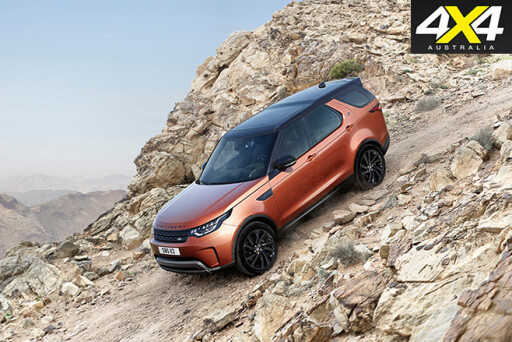 The rampover angle is 27.5 degrees (versus the 4’s 27.3 degrees), while the departure angle is 30 degrees (versus the 4’s 29.6 degrees).
The rampover angle is 27.5 degrees (versus the 4’s 27.3 degrees), while the departure angle is 30 degrees (versus the 4’s 29.6 degrees).
Tyre sizes for the new Discovery will range between 19 and 22 inches; the company is believed to be working on an 18-inch wheel-and-tyre package for a future model and will also offer a 20-inch all-terrain tyre.
The fuel tank on the four-cylinder models likely to account or most sales is a modest 77 litres, although engineers claim a range of more than 750km due to significant improvements to fuel economy. The V6 diesel gets an 85-litre tank.
As with the Range Rover Sport it shares so much with underneath, the Discovery has independent suspension, with wheel articulation claimed at up to 500mm, a slight improvement on the current car.
 The Discovery continues with its class leading 3500kg tow capacity and will introduce the soon-to-arrive Trailer Assist system that semi-autonomously reverses the car with perfect counter steering.
The Discovery continues with its class leading 3500kg tow capacity and will introduce the soon-to-arrive Trailer Assist system that semi-autonomously reverses the car with perfect counter steering.
Pricing will start from $81,590 when the car goes on sale about July 2017.
KEY POINTS
- New aluminium architecture and body
- 480kg lighter than Discovery 4
- Diesel-only range
- Return of Discovery four-cylinder engines
- Improved off-road capability, but with lesser approach angle
- 283mm of ground clearance; 900mm wading depth
- Nine USB ports; six power outlets as part of tech overload
- Terrain Response with auto mode
LAND ROVER DISCOVERY FACTOIDS
- The fifth-generation Discovery is the first since the original Discovery of 1989 and the second generation of 1998 to utilise a four-cylinder engine. The 480kg weight reduction means the four-cylinder diesel performs better than the previous V6. Land Rover is also working on a 2.0-litre four-cylinder petrol engine for the Discovery family.
- The 480kg weight saving was brought about largely by the aluminium architecture and a predominantly aluminium body. Between them the body and monocoque saved 284kg. The four-cylinder engine saved another 108kg, while the suspension (made lighter because it is carrying less weight) saved 88kg.
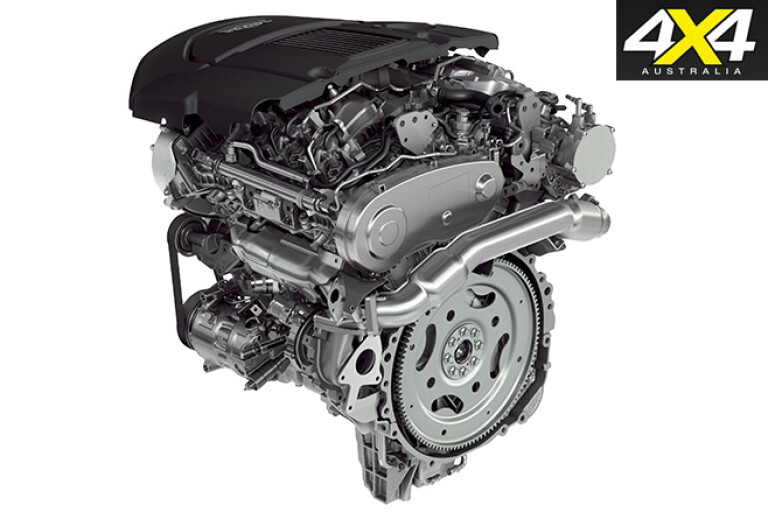
- The bumper of the Discovery is designed to allow air to flow in through the vertical vents on either side and then escape into the front wheel arches. It’s all about reducing aerodynamic drag; the Disco has a co-efficient of drag (Cd) of 0.33.
- Land Rover engineers developed 23,000 lines of computer code just for the automatically folding seats. They can be operated using a smartphone app and are designed not to crash into the other seats, not to squash occupants, and to stop moving if they come up against resistance. The second and third row seats take 14 seconds to be automatically lowered or raised.
- The Discovery’s use of lightweight materials means it has a better weight distribution, which engineers claim is “near 50-50”.

- The Disco’s rear spoiler was designed to keep the rear screen clear of spray and dirt. No word yet how it will cope with the fine dust and mud of the Australian outback.
- The new Discovery will be available with coil springs and a high range-only four-wheel drive system. However, in keeping with the Discovery’s premium positioning, all Australian cars will get air suspension and all but the base model Td4 will get a dual-range transfer case.
- Land Rover says the new Discovery can potentially drive in deeper water than the claimed 900mm wading depth. However, any deeper than that and the tail starts floating.
- The electronic handbrake on the new Discovery is a caliper system, which applies an electronic motor directly on to each rear caliper. It is claimed to be more robust than the cable system of the previous model, something that was prone to regular (and expensive) failures.
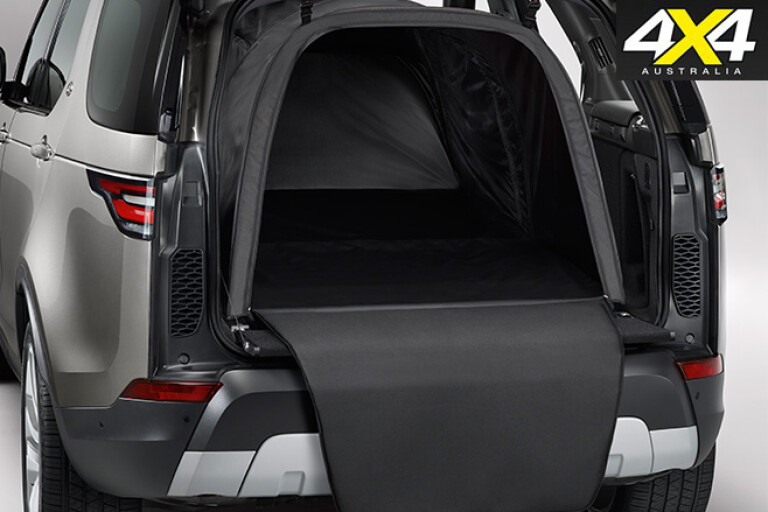
- Land Rover developed a CAD (computer aided design) model of one of the lead engineer’s dogs to ensure pooch would be happy in the revised load area of the Discovery.
- The tail of the new Discovery can be lowered by 60mm when loading, something that was also designed to make it easier for dogs to jump in the back.
- The Discovery’s tail can be raised up to 150mm when parked to help with hitching a trailer.
- The new Discovery is engineered to tow up to 3720kg for the US market. However, Australian regulations mean the company cannot claim a higher tow capacity than the 3500kg limit for SUVs.
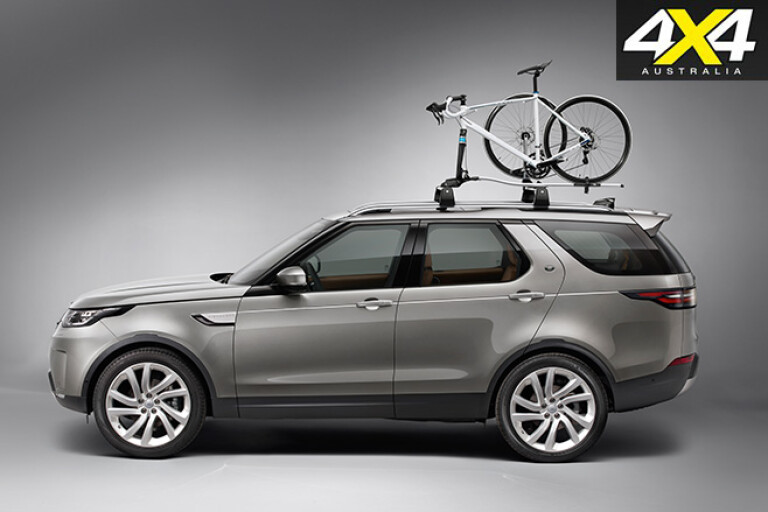
- The new Discovery has space for a fuel tank up to 89 litres, however that tank is only used on the supercharged V6 petrol-powered models that won’t be sold in Australia. Four-cylinder diesels get a 75-litre tank, while the V6 diesel gets an 85-litre tank.
- No word yet on hybrid or V8s, although the latter seems certain given the platform is engineered to take them – with the popularity of the V8 configuration in the Middle East and America likely to cement its eventual arrival in the Discovery.
- Testing and development of the Discovery took place in 20 countries over more than one million kilometres. It’s understood Australia was used for hot weather testing for components such as the air-conditioning.
- Half of the aluminium used in the Discovery is recycled.
- All Land Rover Discovery models will come with a full-sized spare wheel and tyre; it is underslung, so must be lowered from beneath the vehicle to access it.

COMMENTS